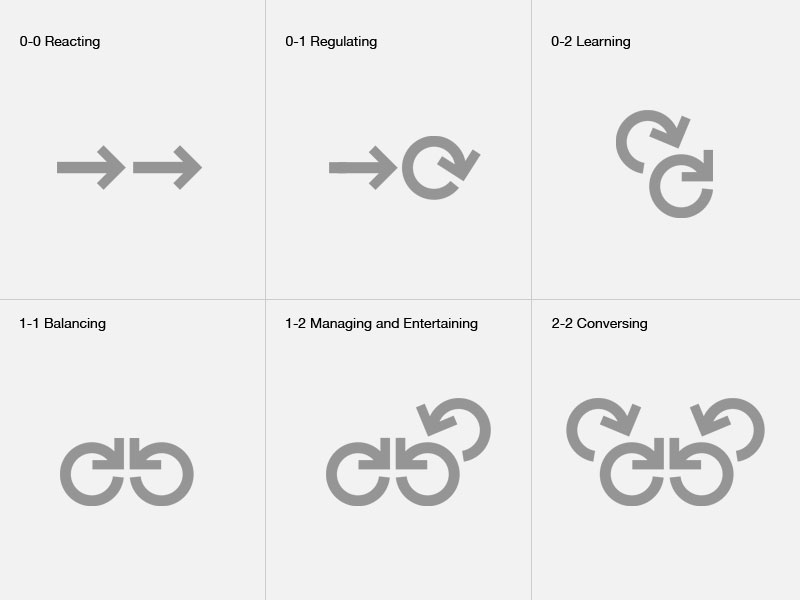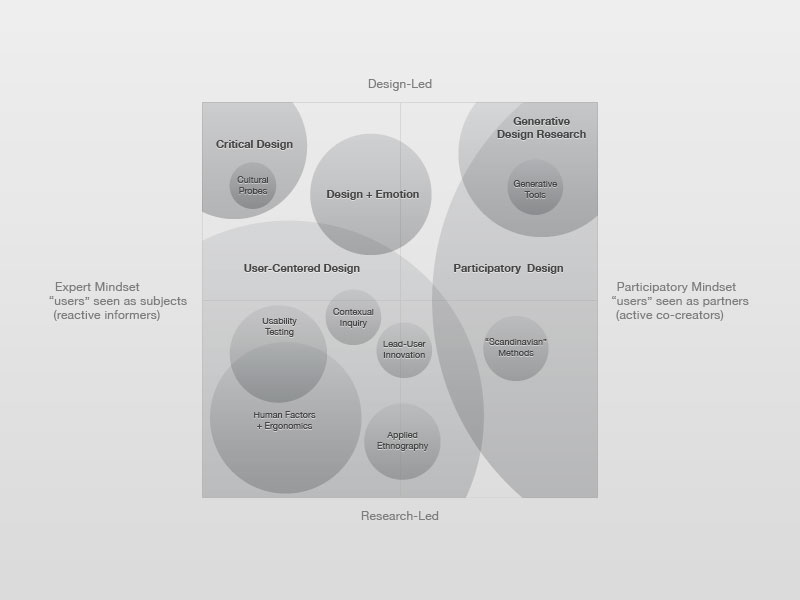My starting point in researching the concept of the
design model will begin with defining exactly what that model is. My starting point will be balanced between three writers on the subject: Don Norman, Alan Cooper and Richard Young. I will in this post clarify what a
design model is and what its purpose is. I will also discuss the difference between a design
model and the interface design itself.
Defining the Design Model
To begin with the
design model it is crucial that the varying terminology used by the writers is explained and synthesised into one term. Before I continue with defining this particular model I think it is important to mention the variant terms used since 1983 in order to synthesise into one term.
User's conceptual model,
represented model and
designer's model are all terms that point to the same cognitive tool. The cognitive science research into
mental models emerged into the literature in 1983 (more about this in a separate post). Dr. Donald Norman, a cognitive scientist who transitioned across disciplines into human-computer interaction and interaction design, began to develop his
design model research at this time. In
Mental Models edited by Gentner and Stevens, one of the two 1983 seminal books on this subject, Norman wrote about the
System Image.
Term One: The System Image
In his chapter
Some Observations on Mental Models Norman proposes that the conceptual model a person makes about an interactive system should have, in an ideal world, its design based around that model.
"This conceptual model should govern the entire human interface with the system, so that the image of that system seen by the user is consistent, cohesive, and intelligible." (Norman, 1983, p13)
This image, the
system image is Norman's early separation of the conceptual model for representing design decisions from a
user's mental model of how an interactive system works. Within conceptual models images, according to Johnson-Laird, are "perceptual correlates of models from a particular point of view" (Johnson-Laird, 1983, p165). Johnson-Laird, in his 1983 book
Mental Models tells us that “many people report that they can use their imaginations to form a visual image of an object or a scene." (ibid, p147) This 'mental model' is a high-level cognitive process, a mental representation of the functionality and causality of an interaction that is constructed by an individual person. An 'image' is one of three forms of mental representation; the other two being a
mental model and a
propositional representation. To keep this post focused upon the
design model I will keep this brief. If a
mental model is a person's 'structural analogue' for understanding an interaction, then an 'image' is the interface designer's conceptualization of how to facilitate a person's success from that interaction. It is dangerous to infer that a 'system image' is the visual interface design - the graphic design. That is a feature of the 'system image' but not its whole.
The 'system' is a key component of this term. The interactive system of the product is based upon algorithmic principles and functions according to the coded commands of that system. People do not, or will not, understand its complexity before using the interactive product. Their interest is using the product to solicit a successful conclusion to a particular goal (whatever that can be defined as). The interface between the task and the goal, the user and the conclusion, is conceptualized by the designers. It is in the interest of the person using the interactive product to feel satisfied that they have successfully achieved what they set out to achieve. Therefore a interaction designer needs to conceptualize a method to facilitate the easiest way for the user to gain their goal. This is achieved by taking into account the
user experience of the product, the user's behaviour (suggested by their mental models of using the product - see separate post), human factors, branding, semiotics, accessibility and usability, and information flow. How a designer processes these design parameters, conceptualizing them into a successful design is where a
design model comes cognitively into its own.
Term Two: UCM - User's Conceptual Model
It was in 1983 that Norman and Young began to identify this design modelling as part of the cognitive science discourse. Norman developed the 'system image' idea further over the next decade until Cooper defined it within interaction design discourse. Before I proceed to Cooper's 'represented model' I first want to stay in 1983 and mention Richard Young's discussion on what Norman is raising. Young doesn't deal directly with the designer's conceptualization, but in discussing the then term
UCM (user's conceptual model) he does also discuss the designer. Young explores the same trinity of cognitive conceptualization, that of the user's modelling of the system, how the system itself works and how to facilitate the interface between them. His discourse is a cogitation between the differing aims of a cognitive psychologist and a designer towards observing and helping the user. He is unclear if the psychologist and designer should share the same conceptual model as the user due to the differing requirements from the model. These differing requirements from the
UCM, Young suggests, could possibly shape it in different ways, depending upon who it is.
Although the
UCM doesn't live long as a term within my literature review, in 1983 Young postulates a point that both Norman and Cooper develop over the next 20 years. Young does state that a designer could, or should, share the model a user has of an interactive product. But to facilitate the product's successful use, the designer needs to incorporate assumptions on how a user will engage with it (based upon the
user's mental model) and use it. He remarks that this conceptual model the designer would use will be cruder than the model that explains the implementation of the system. This model, constructed by the designer, may appear to invalidate aspects of the model that more closely correlates with the interactive system's actual implementation. This is where the
design model, to me begins to become defined. Norman's writing and Young's, both included in the same seminal edited book on Mental Models from 1983, begin this discourse that, I suggest, develops over the next twenty five years through HCI and interaction design through practical work. I am suggesting that the
design model is theoretically under-examined within both cognitive science and the design disciplines, whereas the research into user's
mental models has progressed. The research into a
design model is a subset of mental models but, I believe, could re-focus the application of visual communication within interaction design (Young, 1983, p35).
My final task within this post is to bring the
design model discourse up to date. This is where I will turn my attention to Cooper's term of the 'represented model'.
Term Three: Represented Model
Alan Cooper, of interaction design company
Cooper, in his 2007 book
About Face 3 discusses Norman's concept, referring to it more specifically as a
'designer's model rather than
design model. With a background emerging out of software design Cooper
et al Cooper draws upon the terminology of that discipline and prefers to call this cognitive model a
designer'sRepresented Model. Within software development a "program's
represented model can (and often should) be quite different from the actual processing structure of the program" (Cooper et al, 2007, p29). The processing structure referred to is the the third cognitive model of the actual implementation and processing of the system. In interaction design for software the "ability to represent the computer’s functioning independent of its true actions (…) allows a clever designer to hide some of the more unsavoury facts of how the software is really getting the job done" (ibid, 2007, p29) It is within this cognitive abstraction that the "disconnection between what is implemented and what is offered as an explanation" occurs, and the
represented model is choices that a designer makes based upon understanding both the system's functioning (implementation model) and the user's understanding of how they perceive it to work (
mental model).
It is suspended between two different cognitive models that the
represented model exists. A way for the designer to translate the cold, algorithmic functionality of an interactive system into a warmer experience, designed around a user's understanding of how they perceive the system works. Therefore a designer needs to understand and communicate through information architecture, visual and experience design, an interface that is conceived through a designer's cognitive model derived by understanding both a model for implementation and a model of how a user cognitively understands the process. This
mental model is based each individual user's own experience and what they have learnt. These will raise or lower their expectations of how the interactive system works, according to their own cognitive ability (more on this in another post). The closer a designer gets to the general expectations of the users, the consensus is, the easier the interaction process will be, "One of the most important goals of the designer should be to make the
represented model match the
mental model of users as closely as possible" (ibid, 2007, p70). To do this a designer must have the research that formally records user expectations, their attitude, their perceived expectation and influences upon that expectation, and cognitive factors that contribute to the complexity of the model. "Intelligent people always learn better when they understand cause and effect, so you must give them an understanding of why things work as they do" Cooper
et al suggests; by following the user's model "it will provide the understanding the user needs without forcing him to figure out the implementation model" (ibid, 2007, p46). The final conclusion from Cooper's discussion of
represented model is a sobering idea about the user, "Everything a user does is something he or she considers to be valid and reasonable. Most people don’t like to admit to mistakes in their own minds, so the program shouldn’t contradict this mindset in its interactions with users" (ibid, 2007, p336).
A final note on why I prefer to use Norman's term
design model is that there is a subtle difference between Cooper and Norman's two cognitive models. Although both are discussing the same cognitive process, for me, the term
design model is a clearer term to use when discussing how to conceptualize an interactive system for a user. As the designer ultimately must communicate through the interactive system itself of how it works to a user, the designer must design the user interface so it is closer to how the user believes the interactive system works. I will in two further posts explore the user's
mental model and methodologies for understanding them, before expanding upon the
design model.
This post is not my definitive thesis upon this subject, but merely my current understanding and synthesis. I will be revising my views over the coming weeks in light of posting. Any comments would be helpful for me in that process.
References:
COOPER, A., REIMAN, R. and CRONIN, D. (2007) About Face 3: The Essentials of Interaction Design. Indianapolis: Wiley Publishing Inc.
NORMAN, D.A. (1983) Some observations on Mental Models. In D. GENTNER, and A.L. STEVENS, eds. Mental Models. Lawrence Erlbaum Associates Inc. pp7-14
NORMAN, D.A. (1998) The Design of Everyday Things. MIT Press
YOUNG, R.M. (1983) Surrogates and Mappings: Two Kinds of Conceptual Models for Interactive Devices. In D. GENTNER, and A.L. STEVENS, eds. Mental Models. Lawrence Erlbaum Associates Inc. pp35-52









